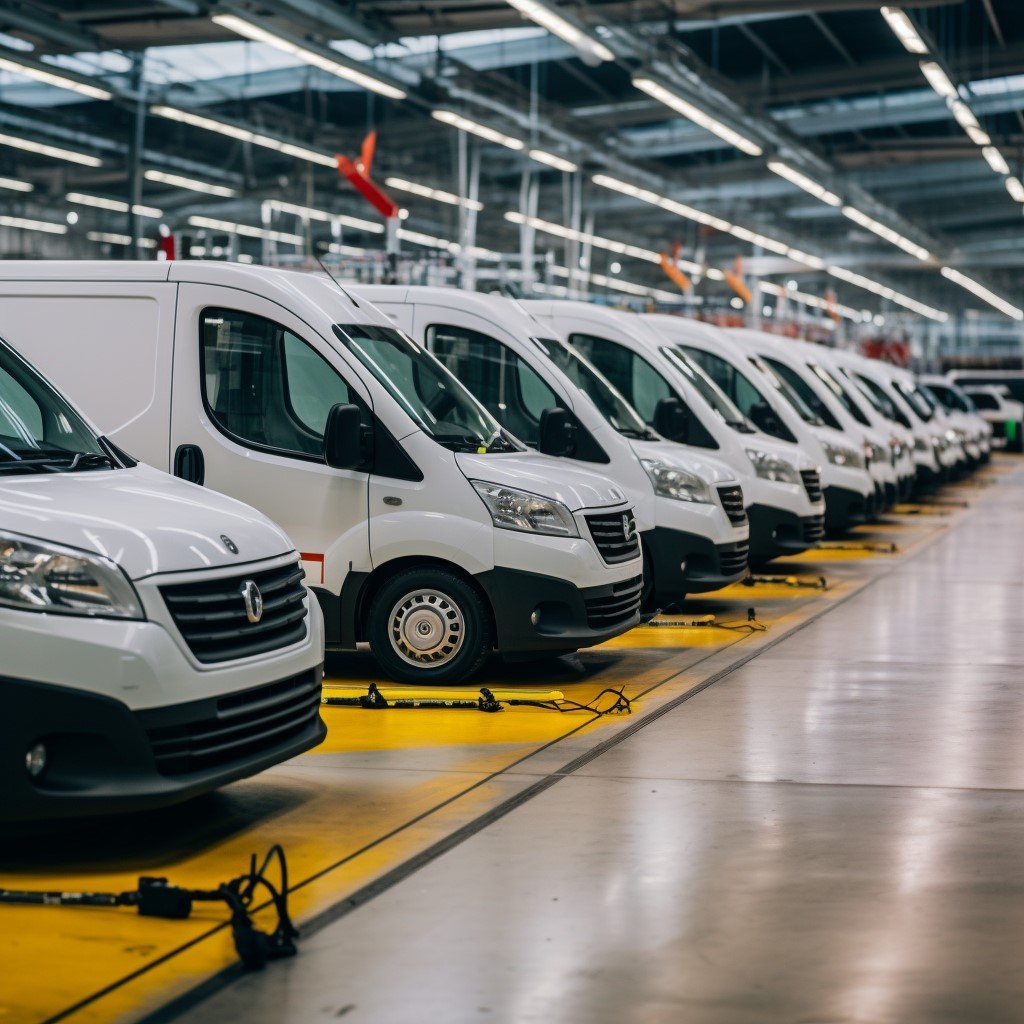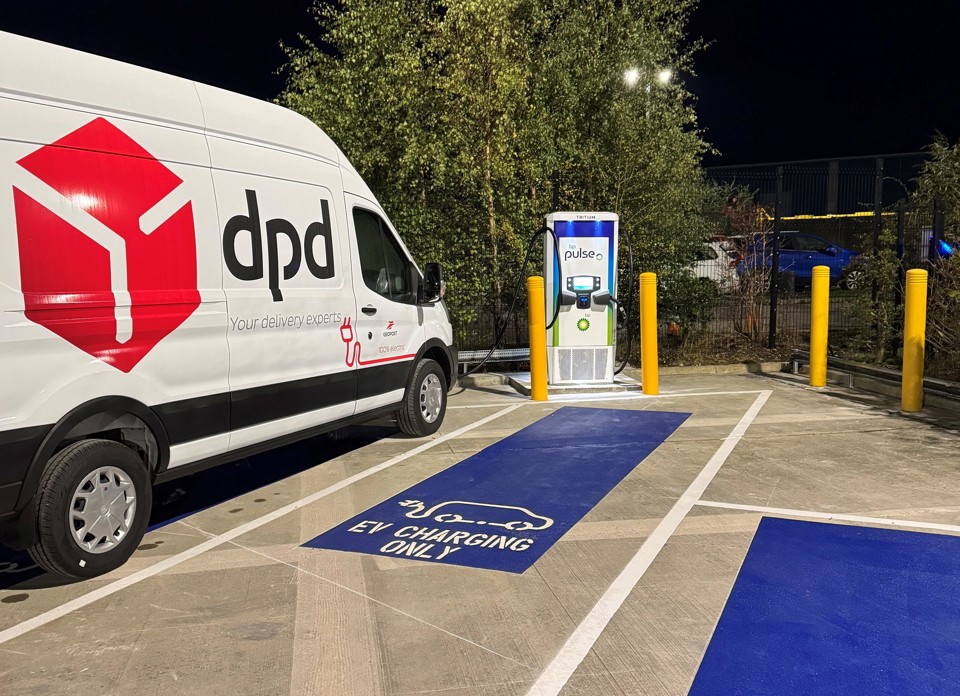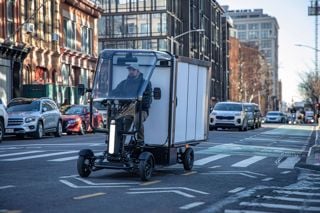The traditional operational challenges of electric vehicles are eroding with maturing technology. Economies of scale and increasingly energy-dense batteries have delivered a wider choice of more versatile vehicles, while strengthening the business case for deploying them. However, electrification also introduces diverse ‘refuelling’ scenarios for drivers – each with their own challenges.
Government policy recognises the need for widespread, reliable and accessible charging. The Department for Transport is targeting a network of 300,000 public chargers by 2030, while charge point operators (CPOs) are facing rigorous new service standards. Transparent pricing, 99% uptime with standardised data sharing, and 24/7 customer helplines are mandatory from November 2024, while all 50kW or faster rapid chargers and new units outputting 8kW or higher must provide contactless payments. CPOs can be penalised £10,000 per breach.
Is public charging fit for fleets?
Olly Craughan, head of sustainability at DPD Group UK, welcomes the targets. The company began electrifying its fleet in 2017, and is engaging with local and central governments to help convey their needs. Businesses are high-usage customers with specific needs and should factored into the design of that fast-expanding network – today’s charging spaces are often too narrow or have height restrictions which are a challenge for larger vans.
“It’s great to have that target, but there needs to be more detail,” Craughan says. “How do we get there? What type of chargers? Where are they going to be installed? Central government should provide more direction – maybe even mandate what should be done in a more controlled manner. That should then filter down to local governments. you've got multiple councils doing different things, it becomes harder to manage and control.”
Network operators are also seeking support. Members of the ChargeUK initiative, including CPOs and other stakeholders, have committed a combined £6bn to build a “consumer first” public network while also highlighting common hurdles. Issues with site planning, permissions and grid upgrades are common bottlenecks, while the Renewable Transport Fuel Obligation (RTFO) doesn’t provide incentives for offering EV charging.

In the meantime, ChargeUK member Gridserve is adapting to a growing fleet customer base. Executive chairman, Roy Williamson, says its Electric Forecourts include refreshments, workspaces, lighting and CCTV suited to fleets and accept payments from Allstar and Paua cards, but adds that commercial vehicles require even more consideration.
“We know fleet needs differ to those of private motorists. For example, vans need wider and longer bays, so we have at least one larger bay at each of our Electric Super Hubs. Frankley South services are a great example,” he comments.
“As more fleets make the move to EVs, fleet-only charging hubs will become increasingly important. We are working on the Electric Freightway – a charging network for eHGVs which will also be suitable for LCVs.”
Home charging challenges
Rising energy prices have affected most EV fleets, but particularly those who rely on public charging. According to the latest Zap-Map Price Index, drivers pay an average 79p per kilowatt-hour (kWh) to use DC rapid chargers, or 56p at a slower AC unit – potentially delivering higher per-mile energy costs than liquid fuels. For comparison, an Ofgem-capped home energy tariff cost 24.5p/kWh, while a low-rate overnight tariff could be half that.
Although employer-funded home charger installations are Benefit-in-Kind (BiK) exempt, grant funding has steadily wound down. Drivers can claim up 75% of the unit and installation costs (capped at £350), but only if they live in flats, rented accommodation or properties without off-street parking. On-street installations require cable management, local authority approval and don’t reserve the adjacent space for the owner’s use.
Flagship Housing Group has a 2028 decarbonisation target for its fleet, and payroll and fleet manager Catherine South cites charger cost, speed and availability as bottlenecks. The company provides up to £850 towards home chargers and, working with Pod Point, it’s walking drivers through any installation uncertainties.
“The £850 is funded, mainly, by savings in Employers’ Class 1A National Insurance savings,” she says. “Those savings start to reduce from 2025-26 as the EV increase. There are still sufficient savings in our costing model to cover a BiK increase up to the end of the 2027-28 tax year, but, when the government announces increases in the BiK rates, we will need to adjust how we fund those chargers.”
Drivers without home charging options face other challenges, South adds. That £850 can be released to cover the additional cost of using public networks, while employees can access workplace chargers at three of its offices using an app. Unfortunately, both are more expensive than plugging in at home, and HMRC-approved mileage rates don’t cover costs.
“We reimburse business mileage using HMRC advisory rates. However, the EV rate only covers those who are able to charge at home. We use the reduction of BiK to explain to employees how they are still better off financially with increasing BiK tax on the horizon for EVs, this may be eclipsed,” she explains.
Optimised workplace charging
DPD also provides £1,000 towards a home charger, complemented by workplace infrastructure. It’s installed AC chargers at several offices, primarily for company car drivers, with 75kW DC units for vans, while 150kW units are planned in 2025. The latter could be shared with electric HGVs as they join the fleet, though at the moment its trucks use hydrotreated vegetable oil (HVO) as a lower-CO2 diesel alternative. Craughan says depot-based infrastructure is optimised for available power, while providing headroom for future-proofing.
New funding options will help, he adds. “CPOs are coming out with ‘charging as a service’ solutions. They pay for all the upfront costs, power upgrades, hardware and then you lease that back from them - typically over five-year period. We're investigating that, and it seems to be quite an ideal solution.”
Konect, a subsidiary of fuel dispensing giant Gilbarco Veeder-Root, provides a turnkey solution that guides fleets through the whole process – from site selection to design to in-life maintenance. Neill Emmett, director, brand and marketing, says investments should consider the fleet's demands three to five years in advance, adding that integration with charging with energy management and storage solutions (potentially utilising second-life batteries) can make a big difference to returns.
“Progressive fleets are increasingly integrating renewable energy to reduce costs and carbon emissions while supporting sustainable EV charging. For those interested in this approach, it’s essential to assess the site's potential for solar or wind energy, research available grants and incentives, and consider investing in energy storage. The benefits include enhanced efficiency, revenue generation, and contributions to grid stability and sustainability.”
New revenue opportunities
Rising public charging costs have made home and workplace charging investments more attractive for fleets, according to Zemo Partnership, a cross-sector alliance promoting low-carbon vehicles. The organisation believes faster and smarter charging systems will enhance operational efficiency, adding that vehicle-to-grid (V2G) could introduce revenue opportunities for fleets. This would enable operators with set usage patterns to sell energy back to the grid – however, only a handful of vehicles are compatible.

Mike Nakrani, CEO of VEV, agrees that the cost control element is critical, and harder to get right than it was with liquid fuels. VEV offers a tailored charging solution for commercial fleets, integrated with energy management and renewable generation, to optimise how they buy and use energy – such as accessing cheaper overnight rates. As fleets often have predictable charging patterns, its platform also enables otherwise idle infrastructure to be shared.
“The depot owner is getting extra fixed cost recovery, and the using it is paying 40p/kWh instead of 69p/kWh. still than if they had their own depot, which might be 25p/kWh, but it's value and you're utilizing the asset better. If you take an industrial estate, do you really need everybody putting their own chargers down? Or would it be better to have five of them and higher utilisation? I’d probably say the latter,” comments Nakrani.
Sharing is also on the agenda at the Association of Fleet Professionals, which created a committee earlier this year to address potential hurdles and solutions. The result is launching as an informal “matchmaking” service between hosts and users, evolving to become a more structured digital platform for those arrangements, including measuring and paying for energy. It’s advising a 40p/kWh rate, balancing income for hosts with savings for visitors.
With a growing EV population, Matt Walters, head of consultancy services and customer value at Ayvens UK, believes there’s an urgent need for leadership. Despite ongoing improvements in public charging, he warns that the UK is falling behind northern European countries, adding that a central government roadmap could deliver more joined-up thinking.
“Fleets have unique demands which differ from private motorists and addressing these is vital as make the transition to electric vehicles. Reliable charging is essential to prevent range anxiety and, without suitable charging options, operations can be seriously impacted,” he concludes.
“Investment in a more reliable and extensive public charging network, like those in Norway and Denmark, would help reduce concerns about charging accessibility and downtime, all of which are key considerations for fleet managers. These countries have demonstrated that accessible charging infrastructure is essential for fleets to operate efficiently and reduce range anxiety.”























Login to comment
Comments
No comments have been made yet.